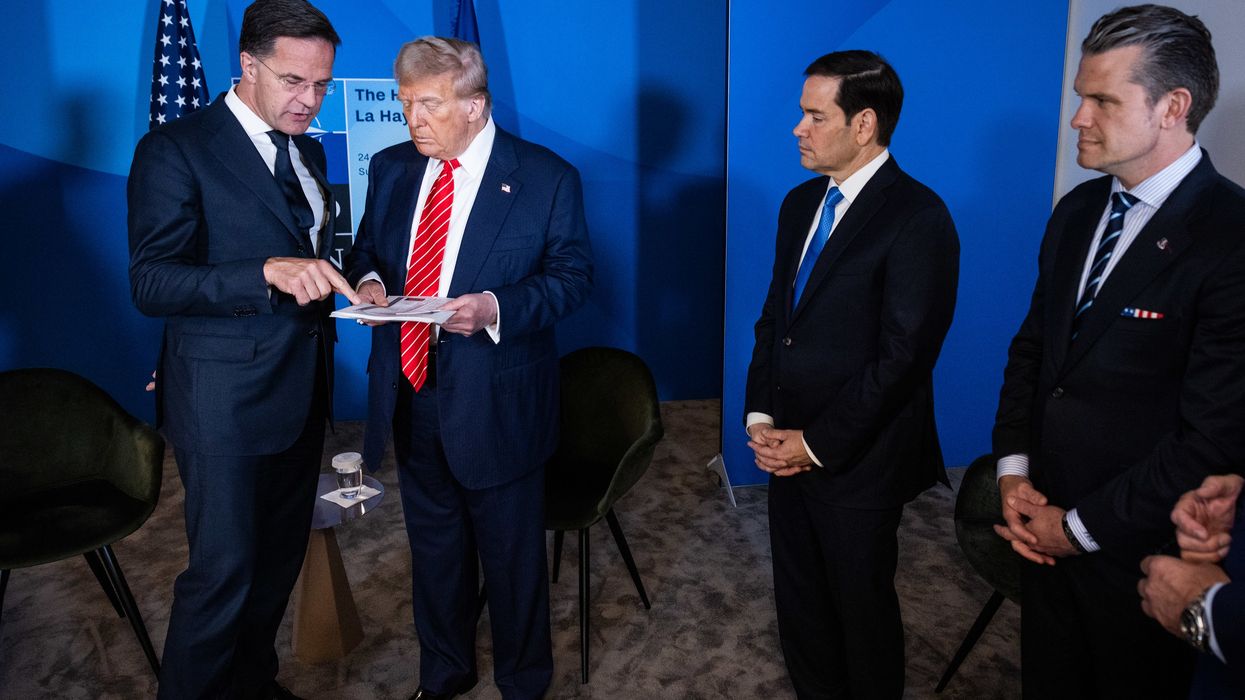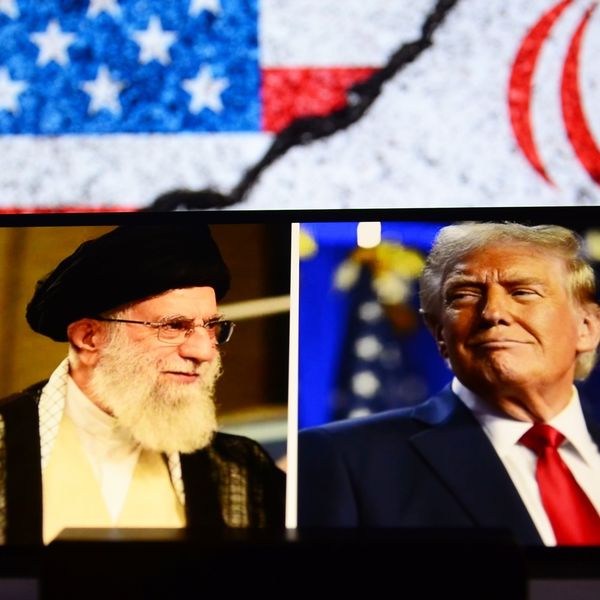Seventy years ago this week, a spark was lit on the Korean Peninsula that would ignite one the deadliest armed conflicts in the 20th century. After three years of intensive combat, millions of soldiers and civilians lay dead; the peninsula itself was turned into a mountain of dust, rubble, and soot; and what would come to be known as the world's most heavily fortified border was erected to separate the combatants.
The world has changed dramatically over the last seven decades, but the 1950-1953 Korean War technically remains ongoing — with the occasional landmine and shooting incident reminding the world that the potential for renewed hostilities is only a short fuse away.
The worst of the fighting may be over, but the legacy of the war remains entrenched in the minds of Koreans on both sides of the Demilitarized Zone. Entire families remain divided, with the lucky ones able to reunite briefly with their relatives in the North before they pass away. Many doubt the war will ever formally end; Kim Yeong-ho, an 89 year-old veteran, told Reuters that, "The war isn’t really over and I don’t think peace will come while I’m still alive.”
Ironically, formally ending the Korean War is one of those commonsense propositions that could have been executed decades ago. And yet a peace treaty is perhaps as far away today as it was 10, 20, or 30 years ago. The United States, however, should make ending the war an immediate priority.
Washington may not get a better opportunity to do its part in closing the chapter on one of the longest wars in history. The supporting players the U.S. needs to pull it off are already on the field. South Korean President Moon Jae-in’s entire North Korea policy is cemented in the belief that reconciliation between the two Koreas is not only desirable, but integral to the establishment of a more stable and prosperous Korean Peninsula. “If we are going to talk about unification,” Moon said in a June 25 speech, “we have to achieve peace first.”
Moon — a longtime fixture in the pro-peace camp who believes building a modicum of trust between Pyongyang and Seoul is the only way to turn the page on 70 years of antagonism — has emphasized the same point from the moment he stepped into the Blue House.
Washington tends to put the blame for the current state of affairs solely on North Korea's shoulders. The Kim regime, of course, makes for an easy target. But simply pointing the finger at Pyongyang is disingenuous and lets U.S. policymakers off the hook for their repeated failures.
For decades, successive administrations in Washington looked upon the formal conclusion of the Korean War as either a throwaway piece of paper that would make no difference in the grand scheme of things or a dangerous concession to a brutal, tyrannical regime. If the U.S. were to consider a peace treaty, the conventional wisdom goes, Pyongyang would first have to prove its sincerity by completely, verifiably, and irreversibly dismantling its entire nuclear program. The North predictably scoffs at these demands and cites them as an example of why the Kim regime is left with no choice but to improve its nuclear deterrent.
Washington’s North Korea policy is a self-licking ice-cream cone, where economic sanctions, a maximalist diplomatic position, and constant reminders of U.S. military superiority produces an even more entrenched Pyongyang that doubles down on its previous course of behavior. None of this should be a surprise; as a weak nation surrounded by neighbors infinitely more wealthy, influential, and powerful than itself, no amount of economic sanctions relief or security guarantees the U.S. can grant to the North will come close to the security benefits a nuclear arsenal provides.
If the U.S. was even halfway interested in peace, Washington would be able to compartmentalize denuclearization in order to ensure that non-proliferation demands would not compromise whatever prospects there were for North-South reconciliation. Unfortunately, this is not what the Trump administration or its predecessors have done.
Since at least the early 1990s, U.S. policy has had one paramount objective: Pyongyang’s full nuclear disarmament. Every other objective, including the establishment of diplomatic ties with the North, inter-Korean economic exchanges, and the building of good-will between Washington, Seoul, and Pyongyang — all of which would serve U.S. national security interests — have been sacrificed at the altar.
The Moon administration’s earlier attempts to reconnect rail and road lines to the North have been complicated by an onerous U.S. and U.N. Security Council sanctions regime that prohibits virtually any significant transaction or inter-Korean initiative. Even State Department statements, normally filled with flowery diplomatic language, preface peace on the Korean Peninsula with denuclearization. "The United States supports inter-Korean cooperation and coordinates with our ROK ally to ensure inter-Korean cooperation proceeds in lockstep with progress on denuclearization,” a State Department spokesperson told South Korean media on June 8. Translation: the U.S. won’t support a peace process if denuclearization is not part of the picture.
Two years and two months ago, Kim Jong-un and Moon Jae-in walked away from their summit in Panmunjom committing to a de-escalation of tensions around the DMZ, more regular communication between North and South Korean officials, and a promise to begin a series of separate negotiations on issues ranging from the drawing of maritime boundaries to another round of family reunions. "Bringing an end to the current unnatural state of armistice and establishing a robust peace regime on the Korean Peninsula is a historical mission that must not be delayed any further,” the joint declaration read. The April 27, 2018 meeting was the first time in nearly a dozen years the leaders of North and South Korea were in the same room — a notable accomplishment in its own right.
Since that date, inter-Korean peace initiatives have stalled under the weight of suspicion and a package of sanctions that makes it practically impossible to proceed without Washington’s explicit approval. This month, Pyongyang cut off all communications lines to Seoul, blew up the liaison office in Kaesong, and warned the South Korean government that it would retaliate against the hundreds of thousands of anti-Kim leaflets launched by balloon from the South. Until Kim overruled his military advisers and suspended additional measures against Seoul, the various inter-Korean documents signed in 2018 were in peril.
The question the United States has to ask itself is why it continues to treat improved diplomatic relations and a formal peace on the Korean Peninsula as a secondary issue. Equally important, why does Washington continue to believe that tying the end of the Korean War to denuclearization is a wise policy?
At worst, the denuclearization horse left the barn a long time ago. At best, a nuclear-free North Korea will require an extensive period of time to come to fruition. There is no reason a history-making peace has to wait in the interim.














